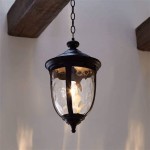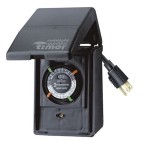How To Finish Cedar Outdoor Furniture
Cedar is a popular choice for outdoor furniture due to its natural resistance to rot, decay, and insect infestation. However, exposure to the elements can eventually take its toll. Applying a proper finish protects the wood, enhances its natural beauty, and prolongs its lifespan. This article outlines the steps involved in finishing cedar outdoor furniture.
1. Preparing the Cedar Surface
Proper surface preparation is crucial for successful finishing. Any existing finish must be removed to allow the new finish to penetrate the wood. Begin by cleaning the furniture with a wood cleaner designed for outdoor use. Follow the manufacturer's instructions and ensure the furniture is thoroughly rinsed and dried afterward.
For furniture with a previous finish, use a suitable paint stripper, following the manufacturer's safety and application guidelines. After the stripper has worked, use a scraper or putty knife to remove the softened finish. For stubborn areas, a stiff nylon brush can be helpful. Sanding is the next step, regardless of whether a previous finish existed. Start with a medium-grit sandpaper (80-100 grit) to smooth the surface and remove any remaining finish. Gradually move to a finer grit (150-220 grit) to create a smooth surface for the finish to adhere to.
Any imperfections in the wood, such as cracks or holes, should be filled with a wood filler compatible with exterior use. Apply the filler according to the manufacturer’s instructions and allow it to dry completely. Once dry, sand the filled areas smooth, ensuring they are flush with the surrounding surface.
2. Selecting the Right Finish
Choosing the right finish is essential for protecting cedar furniture and achieving the desired aesthetic. Various finishes are available, each offering different levels of protection and appearance. These include transparent finishes like clear sealers, stains, and oils, as well as opaque paints.
Clear sealers provide basic protection against moisture and UV damage while allowing the natural cedar color to show through. Stains enhance the wood's natural grain and offer color options while providing UV protection. Oils penetrate the wood, nourishing it from within and providing a natural, low-luster finish. Paints offer the highest level of protection and allow for a wide range of color customization but obscure the natural wood grain.
When selecting a finish, consider the furniture's location and the level of protection required. For furniture exposed to harsh weather conditions, a more durable finish like paint or a high-quality stain is recommended. For furniture in covered areas, a clear sealer or oil may suffice. Products specifically designed for exterior use should always be chosen.
3. Applying the Finish
Before applying the finish, ensure the furniture is clean, dry, and free of dust. If applying a stain or paint, it's recommended to test it on an inconspicuous area first to ensure the desired color and compatibility with the wood. Follow the manufacturer's instructions regarding application method, number of coats, and drying times.
For most finishes, applying thin, even coats is crucial for optimal results. Avoid overloading the brush or applicator, which can lead to drips and runs. Work in the direction of the wood grain whenever possible. Allow each coat to dry completely before applying the next, following the manufacturer’s recommended drying times. Proper drying time is crucial for achieving a durable and long-lasting finish.
For finishes that require multiple coats, lightly sand the surface between coats using fine-grit sandpaper (220 grit or higher). This helps to ensure a smooth and even finish. After sanding, remove any dust with a tack cloth before applying the next coat. A high-quality brush or applicator appropriate for the chosen finish should be used to achieve a smooth, even application.
Once the final coat is applied and thoroughly dry, consider applying a topcoat for added protection, especially in areas with harsh weather. A topcoat can provide an extra layer of defense against UV damage, moisture, and wear. Choose a topcoat that is compatible with the chosen finish and follow the manufacturer’s instructions for application.
Maintaining the finish is essential for prolonging the life of the furniture. Regular cleaning and periodic reapplication of the finish will help to keep it looking its best and protect it from the elements. Inspect the furniture regularly for any signs of wear or damage. Addressing these issues promptly can prevent further deterioration and maintain the furniture's beauty and functionality.

Learn Woodworking Tips With Rockler

How To Finish Cedar For Outdoor Use 2024

Bryan S Site The Finished Diy Cedar Patio Table

Bryan S Site The Finished Diy Cedar Patio Table

Outdoor Finishing Types Real Cedar
Finish A Western Red Cedar Outdoor Table Lumberjocks Woodworking Forum

Learn Woodworking Tips With Rockler

How To Finish And Protect Outdoor Furniture

The Easiest Way To Finish Outdoor Wood Furniture

Caring For Your Handmade Furniture Michael Frazier Designs







